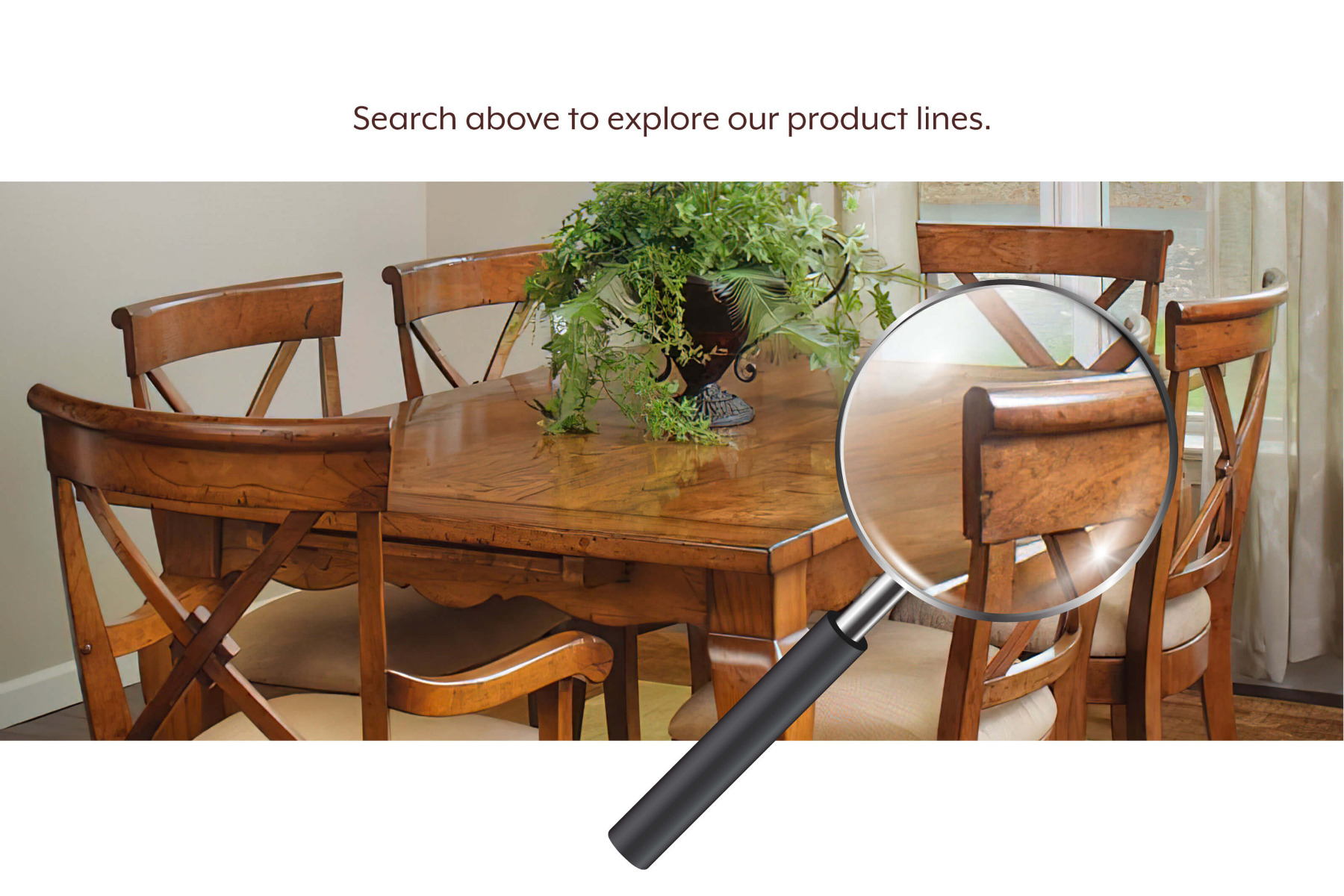Fabric Types
One of the most important qualities in fabric is wearability. One easy way to check the fabric is to hold it up to the light. The less light that shines through, the tighter the weave. Also, a fabric pattern that is woven or knitted with a color thread will generally wear better than a pattern that is printed on. Woven patterns will look almost the same on both sides of the fabric, while printed patterns will be pale or nonexistent on the reverse side.
Here is a guide of some of the most common upholstery fabrics:
- Acetate
- Acetate is a manmade fiber offering a luxurious feel. It offers excellent durability and is shrink, moth, and mildew resistant. In the summertime, acetate can tend to feel warm.
- Acrylic
- Acrylic often used in knits and woven velvets, is soft, lightweight, and resistant to sunlight. Because it holds its shape well, it won’t bag after continued seating. It also takes color well and is resistant to chemicals, moths, oils, and abrasion. It is, however, neither as durable as nylon nor as absorbent as cotton. Low humidity can cause this fabric to have static cling.
- Cotton
- Cotton, a natural plant fiber, is an important upholstery fabric both alone and in blends. It is strong, absorbent, offers a nice strong feel, and has fair resistance to wear. Cotton is easy to clean, but wrinkles and soils easily. While cotton is fairly resistant to heat, it loses strength in sunlight and has a tendency to yellow.
- Linen
- Linen is a natural, strong, and comfortable fabric. It tends to lean towards the more expensive side of most fabrics. Depending upon its application, it can wrinkle easily.
- Nylon
- Nylon is widely used for upholstery because of its durability, resiliency, and soil abrasion resistance. This exceptionally strong man-made fiber dyes well and resists fading, but is neither as soft nor as absorbent as some other fibers. Nylon is an easy to wash/clean fabric. Low humidity environments can cause static cling to occur.
- Olefin
- Olefin, commonly known as polypropylene, has a softer feel than nylon. It also offers great durability, built-in soil and abrasion resistance, and color-fastness. Unlike many other fibers, Olefin must be solution dyed. While this assures lasting color, it limits the spectrum. Olefin’s resistance to mildew makes it practical in humid areas. However, this fabric is heat sensitive and heavy friction can leave permanent marks.
- Polyester
- Polyester, resistant to sunlight, is very durable and resists wrinkles. This fabric is hard to stain, but once stained, they can be hard to remove. Polyester can tend to be a bit warm in the summertime.
- Polyester Microfiber
- Polyeste Microfiber is similar to polyester, but has even greater wear ability. This is generally considered to be the best wearing fabric on the market. Polyester microfiber often reflects light in different directions causing an uneven appearance. Small threads tend to catch easily on the fibers.
- Polypropylene
- See Olefin
- Rayon
- Rayon is the most widely used man-made fiber in upholstery because of its versatility and extensive color range. It is often blended with cotton, an equally important upholstery fiber. It can be made to resemble cotton, wool, or silk. It has a soft feel, absorbs dyes well, offers luster and durability and is fairly resistant to sunlight. Rayon is less resistant than some other fibers to mildew, oil, and grease. A fabric with a high percentage of rayon typically shows wear marks (pilling) easily.
- Viscose
- See Rayon
×
![]()

